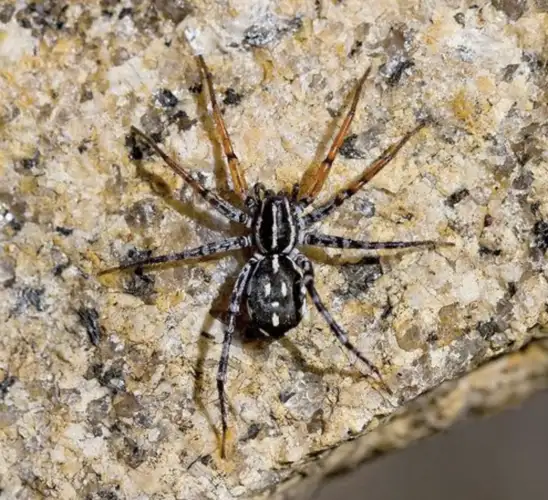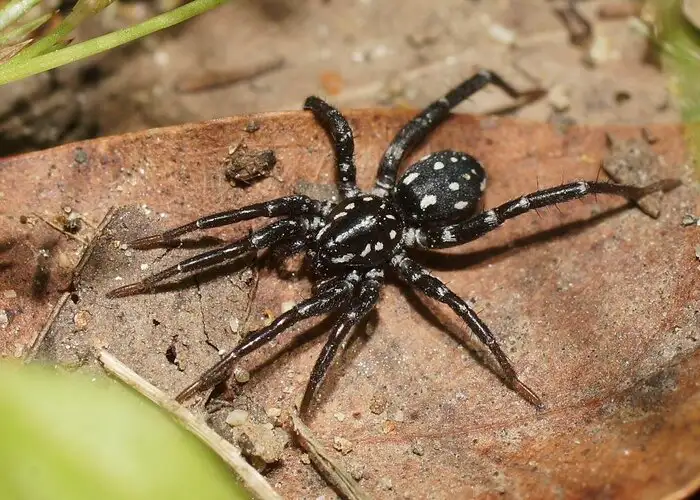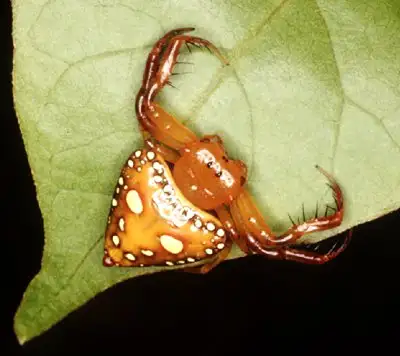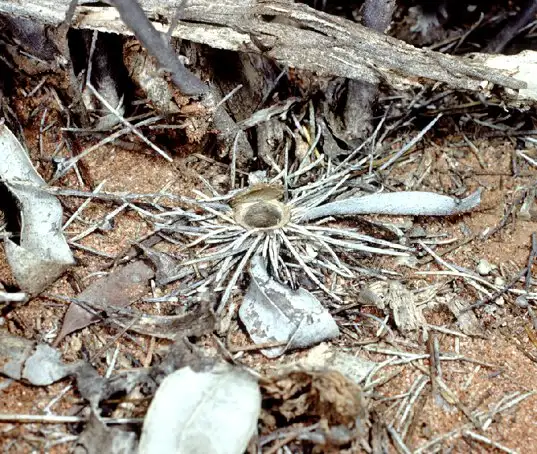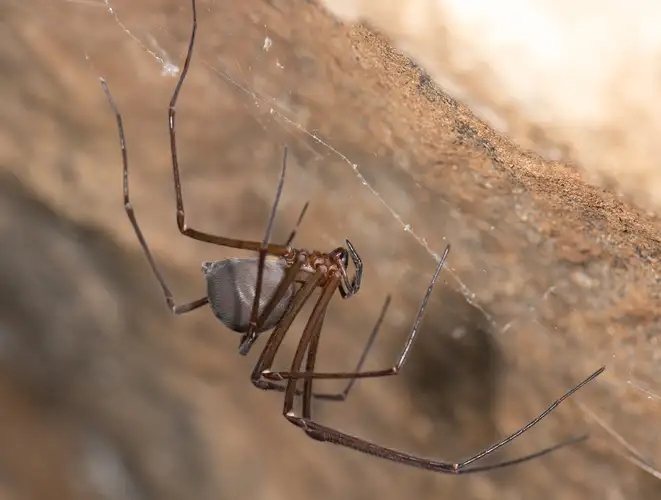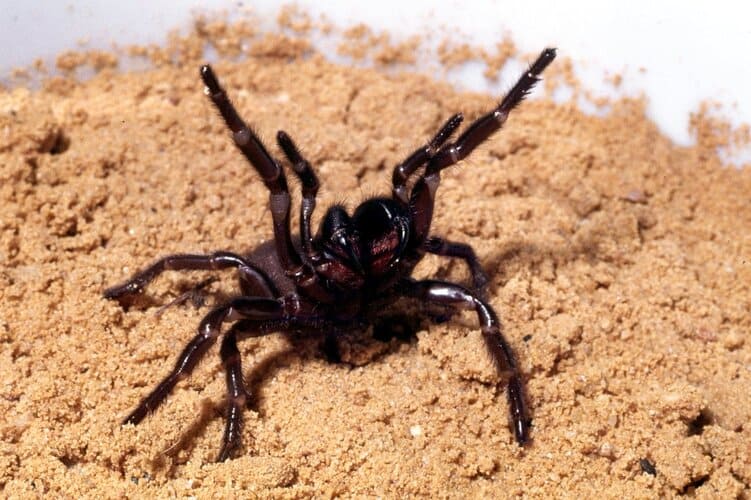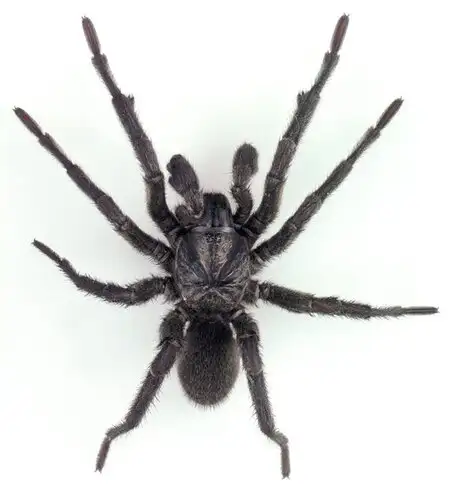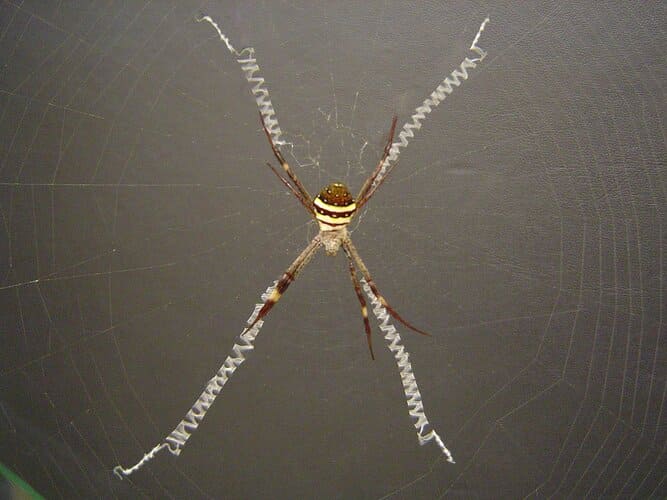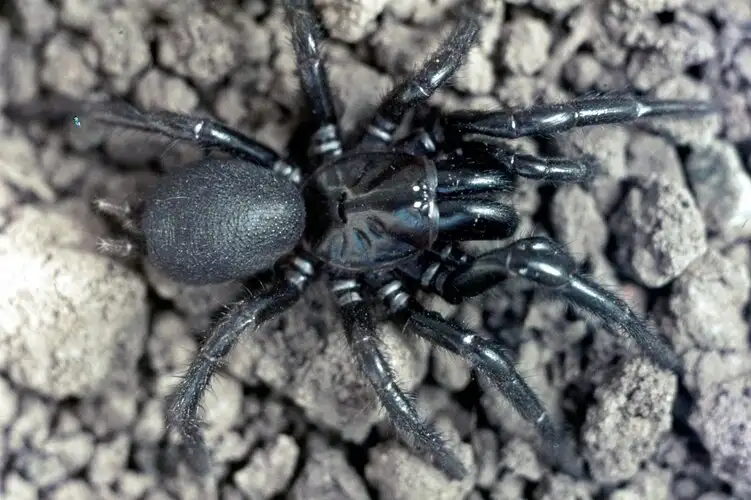Swift Spiders
IUCN
LCBasic Information
Scientific classification
- name:Swift Spiders
- Scientific Name:Nyssus coloripes (representative species of the swift spiders group)
- Outline:Arthropoda
- Family:Corinnidae Nyssus coloripes
Vital signs
- length:Adults about 6–12 millimetres in body length; females slightly larger than males, leg span under 2 centimetres
- Weight:Small ground dwelling spiders; body mass typically tens to a few hundred milligrams
- lifetime:Estimated life span around one to two years depending on climate and food availability
Feature
Small, fast moving ground hunters that do not rely on capture webs but actively pursue insects across soil, leaf litter and tree trunks.
Distribution and Habitat
Urban and rural gardens, leaf litter, open shrubland, forest edges and man made surfaces such as walls and fences across parts of Australia and nearby regions.
Appearance
Moderately slender spiders with dark brown to black bodies and bright orange or yellow markings on the legs and underside; eight eyes and strong front legs adapted for running and pouncing.
Details
Swift Spiders are a group of small, fast moving ground spiders best known from Australia, where the familiar orange legged swift spider Nyssus coloripes is common in gardens and urban areas. They belong to the family Corinnidae and the genus Nyssus. Rather than relying on capture webs, swift spiders actively run over soil, leaf litter and tree trunks to hunt insects.
Taxonomy and Names
Common names: Swift Spiders, Nyssus Spiders, Orange legged Swift Spider (for the best known species)
Representative scientific name: Nyssus coloripes
Family: Corinnidae
Genus: Nyssus
Appearance
Swift spiders are small but robust hunters with a neat, streamlined build:
Body size: adults are about 6–12 millimetres long, females slightly larger than males; leg span is usually under 2 centimetres;
Colouration: most species have dark brown to black bodies with bright orange or yellow bands on parts of the legs and underside. The orange legged swift spider shows a striking pattern of orange and black on the legs;
Body shape: the body is moderately slender with strong legs, especially the front legs, adapted for rapid running and pouncing;
Eyes: eight eyes with a relatively well developed front row, giving fairly good vision for a small ground spider;
Ant mimicry: in some species the body proportions and jerky movements resemble ants, which may help them move among ant trails with less attention.
Distribution and Habitat
Swift spiders of the genus Nyssus are found mainly in Australia and nearby regions, with records from eastern, southern and parts of western Australia, as well as some surrounding islands. Related corinnid spiders occur more widely in temperate and subtropical regions.
Typical habitats include:
Garden beds, lawns, stone edges and leaf litter in towns and rural yards;
Tree trunks, loose bark and fallen logs;
Open shrubland, forest edges and roadside vegetation;
External walls, fences, decking and steps around houses and sheds.
They prefer dry to slightly moist, open surfaces where they can run quickly, such as bare soil, sand, rocks and timber, often in sunny or lightly shaded spots.
Behaviour and Diet
Swift spiders are active ground hunters that search for prey rather than waiting in a web:
They do not build large prey catching webs, but may spin a small silk retreat in a sheltered crack or under debris;
During the day and at dusk they run rapidly over the ground, tree trunks or walls, using sight and touch to detect prey;
Their diet consists mainly of small insects and other arthropods, including ants, aphids, small beetles, small flies and larval stages;
Once a target is located, the spider quickly closes the distance, pins the prey with the front legs and delivers a bite, then drags it to a safer place to feed.
This combination of speed and active searching makes swift spiders important predators in the ground dwelling invertebrate community.
Reproduction and Life Cycle
The life history of swift spiders follows the general pattern of many small ground spiders:
Males leave their hunting area after maturity and roam in search of receptive females;
Courtship involves body postures and palpal tapping that help the female recognise the male as a mate rather than prey;
After mating, the female produces one or more silk egg sacs in a sheltered retreat and may guard them for a period;
Young spiderlings hatch and spend some time near the maternal retreat before dispersing and establishing their own hunting ranges.
Venom and Medical Significance
Although swift spiders are efficient predators for their size, they are small animals and their venom is adapted for subduing insect prey. Current information indicates that they are not regarded as medically significant for humans.
If a bite occurs, typical effects are limited to:
Mild, short lived local pain at the bite site;
Slight redness or small local swelling;
Occasional stronger irritation in sensitive individuals.
Simple first aid, such as washing the site with soap and water and applying a cold pack if needed, is usually enough. People who experience unusual or severe symptoms should seek medical advice.
Ecological Role and Relationship with Humans
By hunting ants, small plant feeding insects and other tiny arthropods, swift spiders act as natural pest controllersin gardens, parks and agricultural land.
Because they do not build large webs and rarely interact directly with people, there is usually no need to remove them. Keeping gaps under doors sealed and reducing clutter near house foundations is generally sufficient to minimise the chance of spiders wandering indoors.
References
Raven, R. J. 2015. A revision of ant-mimicking spiders of the family Corinnidae (Araneae) in the Western Pacific. Zootaxa 3958(1): 1-258. doi:10.11646/zootaxa.3958.1.1
Framenau, V.W., Baehr, B.C. & Zborowski, P. 2014. A Guide to the Spiders of Australia, Reed New Holland.
Whyte, R. & Anderson, G. 2017. A Field Guide to Spiders of Australia. CSIRO Publishing.
FAQ
Q1. Do swift spiders attack people?
No. They normally run away from disturbance and only bite in self defence when handled or trapped against the skin.
Q2. Are swift spiders dangerous?
They are not considered dangerous. Their venom is effective on small arthropods but only causes mild local effects in humans in most reported cases.
Q3. Why are they called swift spiders?
The name refers to their very fast, darting style of movement. They can run quickly over open ground and change direction abruptly while chasing prey or escaping threats.
Q4. Are swift spiders beneficial in gardens?
Yes. They feed on many small insects, including potential garden pests, and are part of the natural control system that helps keep insect numbers in balance.

